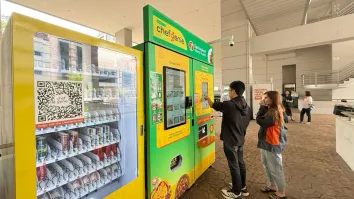How data and personalisation can satiate the restaurant business
Netflix, Amazon, and Spotify have reaped rich rewards – from improved sales and usage to lower churn – simply by doing one thing: personalising the user experience and recommending things audiences will like but are unlikely to discover by themselves.
The potential of this type of personalisation has long been touted in the restaurant industry where the dining experience is largely standardised with all consumers receiving the same menu and promotions with little regard for differences in taste, preferences, and behaviour.
One reason for this has been the lack of large data sets, which help to improve our understanding of diner behaviour and preferences, taking the guesswork out of the waiters’ job. But now, thanks to digitalisation – including digital menus, kiosks, and mobile apps there is a growing volume of useable data that can make personalisation in the restaurant industry possible.
Imagine walking into a restaurant, being ushered to your favourite table, being recommend a dish and drink you’re sure to enjoy, and then simply walking out without having to make a physical payment.
Challenging Restaurant environment across the region
Indeed, across the region – but particularly in Singapore – restaurants are going through somewhat of a crisis due to manpower shortages, high rentals, and rising food costs. According to Enterprise Singapore, 28% of F&B outlets in Singapore close within a year of opening, with the number rising to 40% for restaurants that have been operational for about five years.
The trend is slightly different in other markets, but no less concerning. In Malaysia, foreign workers account for the majority of staff in restaurants, but because they’re not familiar with the local language, they’re unable to add much value to the overall customer experience.
Through new technology-driven tools, artificial intelligence and an omnichannel digital experience, restaurants today can make their offerings and services more meaningful than ever before – and it will quickly become a key driver of success in a challenging restaurant environment.
So, while restaurants can’t control the cost of ingredients and rentals, they can provide better, more consistent and personalised dining experiences and engagement, in turn, improving revenues, customer satisfaction, and loyalty while reducing staff costs.
Creating rich experiences and improving profitability
Data and the technology can be powerful tools in the increasingly competitive restaurant space. While technology is playing a crucial role across the entire restaurant value chain, from automating staff tasks through to optimising operations, it’s also helping restaurants generate vast amounts of rich consumer behaviour and operational data.
This “big data” when leveraged the right way, can help better predict demand, personalise offerings and improve the overall dining experience, in turn leading to greater efficiencies and profits. And restaurants that understand this not only connect better with consumers but also create individualised marketing.
For consumers, this means they are no longer offered standard menu selections, recommendations, and promotions. One size no longer fits all -- after all, each diner is unique and should be treated that way. So, driven by AI and Machine Learning algorithms, diners will receive menus, recommendations, and promotions tailored to their unique tastes, preferences, and behaviours – and in the future, even the time of day, weather and occasion!
Already, restaurants embracing personalisation are seeing tremendous growth, with several of them we’re working with reporting double-digit growth in revenue and up to 25% higher average bill value.
Overcoming adoption challenges
Despite these technologies available and the proven results, F&B operators remain reluctant to adopt new technology.
Part of the problem is that the restaurant technology industry is highly fragmented, with too many providers creating a lot of noise with their many different solutions. This confuses restaurant owners even though they fully understand the importance of data and its impact on profits and efficiencies.
The other broader issue is the popular narrative that technology, AI and Machine Learning, are likely to take jobs away from people and reduce human interaction. This simply isn’t true. The idea isn’t to eliminate jobs entirely but to reallocate labour to be more efficient and more customer facing.
As the technology matures – and as bigger chains like McDonald’s and Starbucks take the leap – other, smaller players have begun to join the trend, too. At TabSquare, we’re driving forward the personalisation agenda through education and by working closely with restaurant associations and relevant government agencies in each country.
The results of personalisation efforts are numerous and include higher revenue, customer satisfaction, and better brand loyalty. In an era where restaurant traffic is stagnating, this is an important opportunity to consider.


























